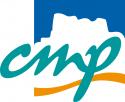UB08 Session 8
Date: Wednesday 29 March 2017
Time: 16:00 - 18:00
Location / Room: Booth 1, Exhibition Area
| Label | Presentation Title Authors |
|---|---|
| UB08.1 | COSSIM: A NOVEL, COMPREHENSIBLE, ULTRA-FAST, SECURITY-AWARE CPS SIMULATOR Presenter: Nikolaos Tampouratzis, Technical University of Crete, GR Authors: Antonios Nikitakis and Andreas Brokalakis, Synelixis Solutions Ltd, GR Abstract One of the main problems Cyber Physical Systems (CPS) and Highly Parallel Systems (HPS) designers face is the lack of simulation tools and models for system design and analysis. This is mainly because the majority of the existing simulation tools can handle efficiently only parts of a system (e.g. only the processing or only the network) while none of them supports the notion of security. Moreover, most of the existing simulators need extreme amounts of processing resources while faster approaches cannot provide the necessary precision and accuracy. COSSIM is an open-source framework that seamlessly simulates, in an integrated way, the networking and the processing parts of the CPS and Highly Parallel Heterogeneous Systems. In addition, COSSIM supports accurate power estimations while it is the first such tool supporting security as a feature of the design process. The complete COSSIM framework together with its sophisticated GUI will be presented. More information ... |
| UB08.2 | NETFI-2: AN AUTOMATIC METHOD FOR FAULT INJECTION ON HDL-BASED DESIGNS Presenter: Alexandre Coelho, Université Grenoble Alpe, FR Authors: Miguel Solinas, Juan Fraire, Nacer-Eddine Zergainoh, Pablo Ferreyra and Raoul Velazco, TIMA, FR Abstract Fault injection tools, which include fault simulation and emulation, are a well-known technique to evaluate the susceptibility of integrated circuits to the effects of radiation. This work presents a methodology to emulate Single Event Upsets (SEUs) and Single Event Transients (SETs) in a Field Programmable Gate Array (FPGA). The method proposed combines the flexibility of FPGA with the controllability provided by the MicroBlaze, to emulate HDL circuit and control the fault injection campaign. This approach has been integrated into a fault-injection platform, named NETFI (NETlist Fault Injection), developed by our research group, and received the name of NETFI-2. To validate this methodology fault injection campaign have been performed in Leon3 and Stochastic Bayesian Machine. Results on an Artix-7 FPGA show that NETFI-2 provides accurate measurements while improving the execution time of the experiment by more than 300% compared with analogous simulation-based campaigns. More information ... |
| UB08.5 | ITMD: RUN-TIME MANAGEMENT OF CONCURRENT MULIT-THREADED APPLICATIONS ON HETEROGENEOUS MULTI-CORES Presenter: Karunakar Reddy Basireddy, University of Southampton, GB Authors: Amit Singh, Bashir M. Al-Hashimi and Geoff V. Merrett, University of Southampton, GB Abstract Heterogeneous multi-cores often need to deal with multiple applications having different performance requirements concurrently, which generate varying and mixed workloads. Runtime management is required for adapting to such performance requirements and workload variabilities, and to achieve energy efficiency. It is challenging to efficiently exploit different types of cores simultaneously and DVFS potential of cores. We present a run-time management approach that first selects thread-to-core mapping based on the performance requirements and resource availability. Then, it applies online adaptation by adjusting the voltage-frequency (V-f) levels to achieve energy optimization. We demonstrate the proposed run-time management approach on the Odroid-XU3, with various combinations of multi-threaded applications from PARSEC and SPLASH benchmarks. Results show an average improvement in energy efficiency up to 33% compared to existing approaches. More information ... |
| UB08.6 | GNOCS: AN ULTRA-FAST, HIGHLY EXTENSIBLE, CYCLE-ACCURATE GPU-BASED PARALLEL NETWORK-ON-CHIP SIMULATOR Presenter: Amir CHARIF, TIMA, FR Authors: Nacer-Eddine Zergainoh and Michael Nicolaidis, TIMA, FR Abstract With the continuous decrease in feature sizes and the recent emergence of 3D stacking, chips comprising thousands of nodes are becoming increasingly relevant, and state-of-the-art NoC simulators are unable to simulate such a high number of nodes in reasonable times. In this demo, we showcase GNoCS, the first detailed, modular and scalable parallel NoC simulator running fully on GPU (Graphics Processing Unit). Based on a unique design specifically tailored for GPU parallelism, GNoCS is able to achieve unprecedented speedups with no loss of accuracy. To enable quick and easy validation of novel ideas, the programming model was designed with high extensibility in mind. Currently, GNoCS accurately models a VC-based microarchitecture. It supports 2D and 3D mesh topologies with full or partial vertical connections. A variety of routing algorithms and synthetic traffic patterns, as well as dependency-driven trace-based simulation (Netrace), are implemented and will be demonstrated More information ... |
| UB08.8 | SELINK: SECURING HTTP AND HTTPS-BASED COMMUNICATION VIA SECUBE™ Presenter: Airofarulla Giuseppe, CINI & Politecnico di Torino, IT Authors: Paolo Prinetto1 and Antonio Varriale2 1Politecnico di Torino, IT; 2Blu5 Labs Ltd., IT Abstract The SEcube™ Open Source platform is a combination of three main cores in a single-chip design. Low-power ARM Cortex-M4 processor, a flexible and fast Field-Programmable-Gate-Array (FPGA), and an EAL5+ certified Security Controller (SmartCard) are embedded in an extremely compact package. This makes it a unique Open Source security environment where each function can be optimized, executed, and verified on its proper hardware device. In this demo, we present a client-server HTTP and HTTPS-based application, for which the traffic is encrypted resorting to the hardware built-in capabilities, and the software libraries, of the SEcube™. By doing so, we show how communication can be secured from an attacker capable of inspecting, and tampering, the regular communication. More information ... |
| UB08.9 | HEPSYCODE: A SYSTEM-LEVEL METHODOLOGY FOR HW/SW CO-DESIGN OF HETEROGENEOUS PARALLEL DEDICATED SYSTEMS Presenter: Luigi Pomante, University of L'Aquila, IT Authors: Giacomo Valente1, Vittoriano Muttillo1, Daniele Di Pompeo1, Emilio Incerto2 and Daniele Ciambrone1 1University of L'Aquila, IT; 2Gran Sasso Science Institute, IT Abstract Heterogeneous parallel systems have been recently exploited for a wide range of application domains, for both the dedicated (e.g. embedded) and the general purpose products. Such systems can include different processor cores, memories, dedicated ICs and a set of connections between them. They are so complex that the design methodology plays a major role in determining the success of the products. So, this demo addresses the problem of the electronic system-level hw/sw co-design of heterogeneous parallel dedicated systems. In particular, it shows an enhanced CSP/SystemC-based design space exploration step (and related ESL-EDA prototype tools), in the context of an existing hw/sw co-design flow that, given the system specification and related F/NF requirements, is able to (semi)automatically propose to the designer: - a custom heterogeneous parallel architecture; - an HW/SW partitioning of the application; - a mapping of the partitioned entities onto the proposed architecture. More information ... |
| UB08.10 | PULP: A ULTRA-LOW POWER PLATFORM FOR THE INTERNET-OF-THINGS Presenter: Francesco Conti, ETH Zurich, CH Authors: Stefan Mach1, Florian Zaruba1, Antonio Pullini1, Daniele Palossi1, Giovanni Rovere1, Florian Glaser1, Germain Haugou1, Schekeb Fateh1 and Luca Benini2 1ETH Zurich, CH; 2ETH Zurich, CH and University of Bologna, IT Abstract The PULP (Parallel Ultra-Low Power) platform strives to provide high performance for IoT nodes and endpoints within a very small power envelope. The PULP platform is based on a tightly-coupled multi-core cluster and on a modular architecture, which can support complex configurations with autonomous I/O without SW intervention, HW-accelerated execution of hot computation kernels, fine-grain event-based computation - but can also be deployed in very simple configuration, such as the open source PULPino microcontroller. In this demonstration booth, we will showcase several prototypes using PULP chips in various configuration. Our prototypes perform demos such as real-time deep-learning based visual recognition from a low-power camera, and online biosignal acquisition and reconstruction on the same chip. Application scenarios for our technology include healthcare wearables, autonomous nano-UAVs, smart networked environmental sensors. More information ... |
| 18:00 | End of session |





